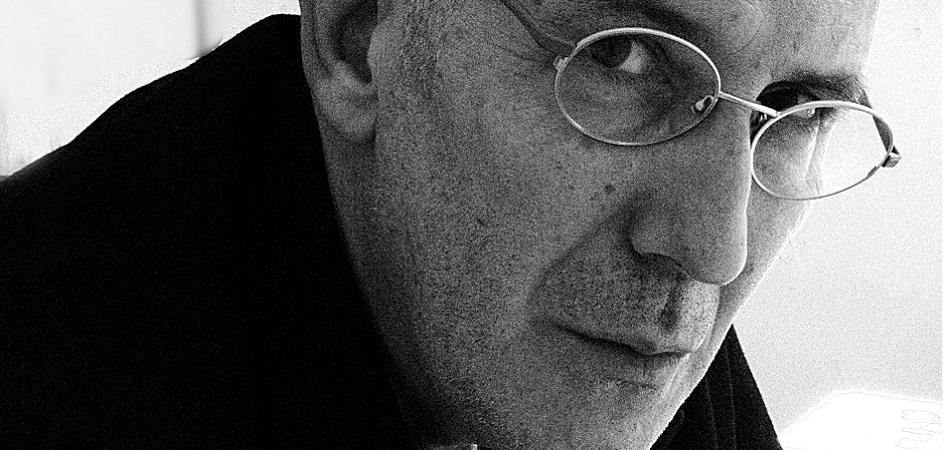LeGaspi, Belew, Westwood and other pop couturiers
VALENCIA. There is an Instagram profile dedicated to Lou Reed, theloureedproject, whose manager, whenever possible, emphasizes the singer's fashion-related issues. When I say fashion I mean the style, the clothes you wear and the image you build, I'm not talking about the trends set by the fashion shows. Fashion and pop music are inseparable. Spanish music journalism usually ignores this type of affinity, as if they were unimportant or directly fagot. That's what the admirers of Frank Sinatra must have thought when they saw Elvis move his hips: fagots. My first contact with most rock stars was visual. Before knowing what Elton John, The Who, The Tubes or Lou Reed himself could sound like, he had discovered them on the covers and reports of Popular 1 and Vibraciones. What they wore was important, it could even make the difference between what was worth discovering and what wasn't. If he could explore the universes that the looks of Patti Smith or the Sex Pistols promised, why would he waste his time with Eric Clapton?
When I was 15 years old, I found Kiss ravishing. I was embarrassed to say that I wanted to buy Destroyer because Kiss was considered a little serious group (it is true, compared to Dylan or Reed, they were, but that does not necessarily have to be a bad thing). His image of Marvel comic book supervillains really appealed to me. Kiss had everything very well calculated and they did their job very well as enhancers of adolescence, hence the perfect finish of their staging. Today I know that those uniforms that left us dismayed did not come out of nowhere, they had an author, who in this case was called Larry LeGaspi. Without him, Kiss would not have had the same impact, in the same way that their other great mannequins, the Labelle trio, would not have. Futuristic designs, silver platforms, fantasies inspired by outer space. In her book Why Labelle Matters, Adele Bertei reminds us of that Oscar Wilde maxim: Give a man a mask and he will tell you the truth. Give an artist an image to cover themselves with and they will become the character you need to see. This is why pop music is intrinsically related to fashion even before it exists as such, as when in the early 1960s Miles Davis allowed himself to be photographed in hard-collared shirts, thin ties and Brooks Brothers pieces, emulating the aesthetic idols of the. Fred Astaire, Cary Grant, the Duke of Windsor and, above all, the boxer Jack Johnson, the first African-American to win the world heavyweight title, who, like the trumpeter, was fond of good suits.
We are talking about the importance of the relationship between fashion and pop music and Bowie has not yet come out, perhaps because first we should return to Elvis, who as soon as he appears on the scene, capitalizes on a lifestyle in which the image is part of that vital manifesto that is rock & roll. A package that includes, once again, the style, the way you do your hair, the glasses you wear, the clothes you wear. With Elvis, everything will start to move very fast, and it will change at great speed. Then we will see him already forgotten by the young public, who prefer the Stones and even the Sex Pistols, dressed in his grandiose Napoleonic jumpsuit sprinkled with rhinestones. The piece, the work of Bill Belew, was born out of necessity: the idol needed a garment that would allow him freedom of movement without being in danger of breaking. So no, you can't separate the sight from the sound when you're talking about pop music. And if there is an image, there is fashion, it doesn't matter if that fashion is created by the musician himself with his own means, as everyone did at the beginning, when they were poor and had to make a living to stand out, or if it is created by a consecrated designer, as was the case with the collarless blazer uniforms that Pierre Cardin designed for the Beatles when they began to take off.

Roxy Music owe part of their visual impact to Antony Price: when he saw them appear in the studio to have Karl Stoecker take photos for his first album, the couturier made them take off their jeans and dressed them in his own clothes. . In turn, in 1976, the Ramones shaped an image that would have so much visual impact during the following years, recovering garments -skinny jeans, T-shirts, Perfecto jackets- that date back to the movie The Savage, starring Marlon Brando . The Sex Pistols were not born in a clothing store, but it is true that the Sex clothing store, run by Vivienne Westwood and Malcolm McLaren, was their incubator. Without the transgression that Westwood's clothes printed, especially the t-shirts, designed to offend everyone, and fueled in many cases by the situationist slurs that designer Jamie Reid liked so much, the Pistols would not have been half as scary given to the average British citizen in 1977.
That cool Velvet Underground photo that served as the poster for the Todd Haynes documentary, the one where they're surrounded by Warhol's silver helium balloons, was taken during a performance at the Paraphernalia boutique. His presence there is due to the fact that the director was Betsey Johnson, partner of John Cale. She was largely responsible for the band's look, that fondness for black garments that, in Cale's case, highlighted her European elegance. Johnson also oversaw the clothing worn by the New York Dolls on their first album cover. Without an image, no pop fantasy is complete. Even when the image consists in pretending that it doesn't exist -the first photographs of Talking Heads serve as an example-, the mask is there.









